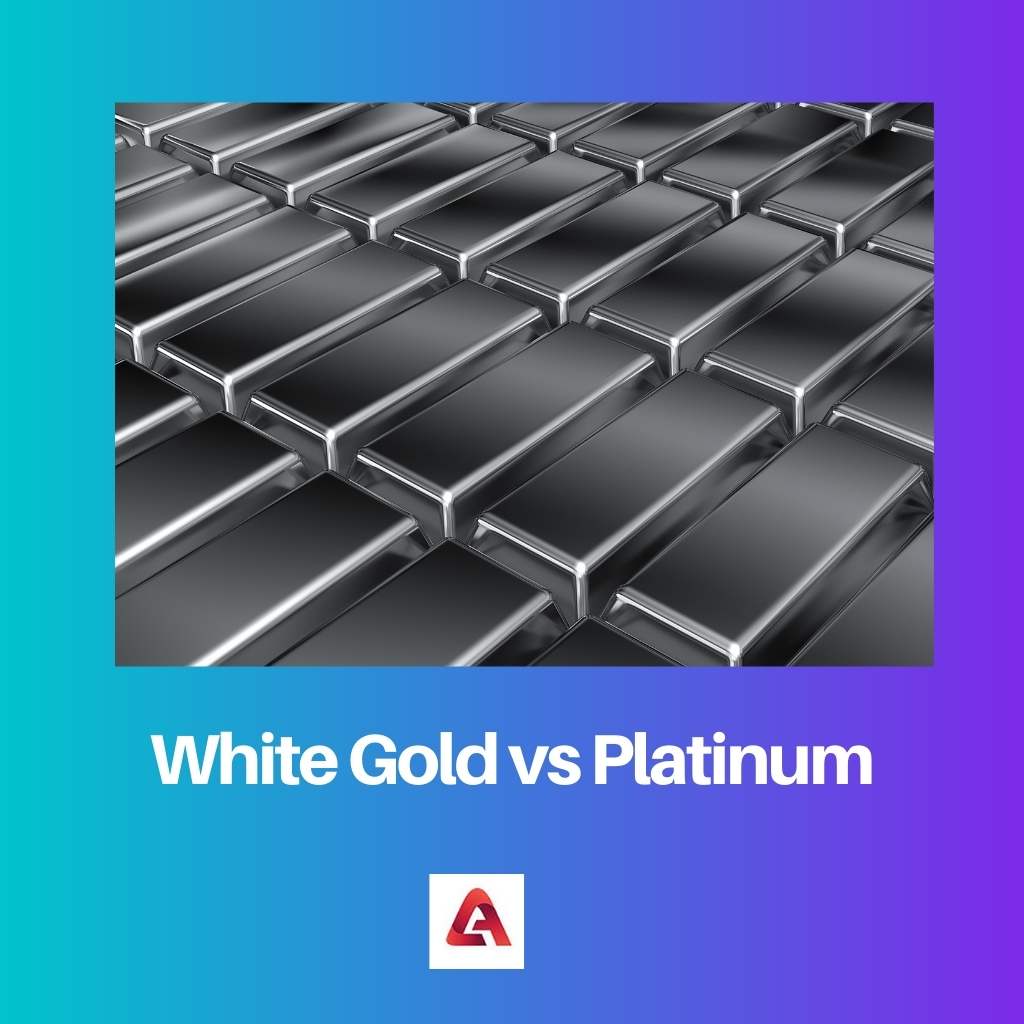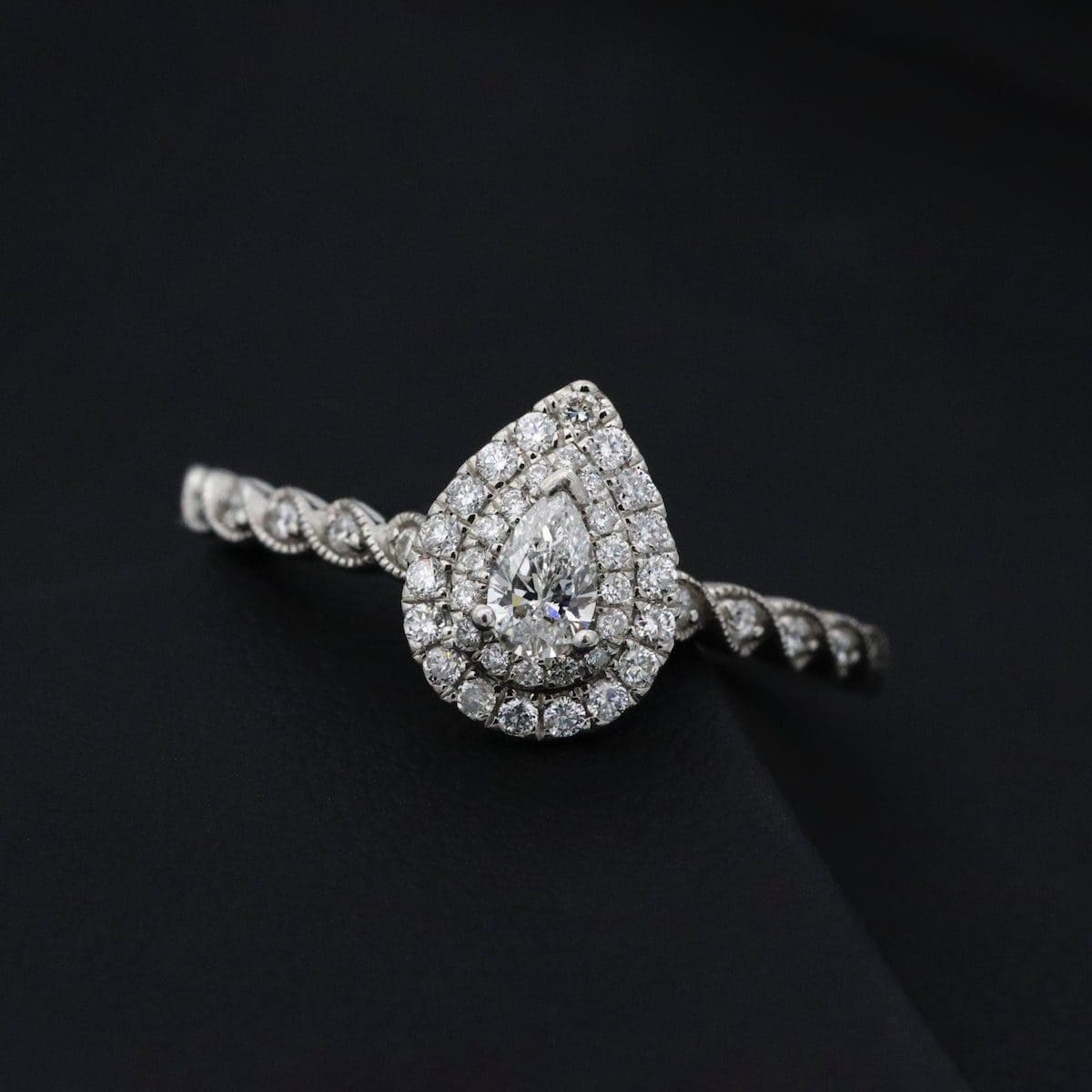Metals and non-metals are the elements that can be found in the earth’s crust. Some of them are naturally occurring but in the impure or mixed form, which is then refined to purified to obtain the required form.
Key Takeaways
- White gold is a gold alloy mixed with other metals, while platinum is a naturally white, pure metal.
- Platinum is denser and more durable than white gold, making it a more suitable choice for daily wear.
- Platinum is more expensive than white gold due to its rarity and density.
White Gold vs Platinum
The difference between White Gold and Platinum is that White gold is combined or formed by mixing other metals or elements in its chemical structure to form it, whereas comparatively, on the other hand, Platinum is the pure form of the metal and doesn’t have any impurities within it. The white gold is obtained after mixing the yellow gold (original color) with the palladium metals, which makes it obtain the white color, whereas comparatively, Platinum is naturally occurring in white color.

White Gold is an alloy that is formed after mixing the original yellow color gold with the metals like – palladium, nickel, and copper that impart the white color or maybe grey or off-white.
Platinum is nearly about purified to up to 95%. The metal is somewhat mixed with other elements, copper and nickel. The price range of the metal ranges as of with the purity of the metal and the amount of metal used in making up the jewellery.
Comparison Table
| Parameters of Comparison | White Gold | Platinum |
|---|---|---|
| Composition | 18 Karat contains 75% gold while 24 Karat contains 58.3% of gold mixed with the different elements | 95% pure form and rest is doped with different elements |
| Price | Cheaper | 40-50% costlier |
| Color | White/off-white/Grey | Pure White |
| Durable | High durability with everyday use | Better than gold |
| Maintenance | Every year to be dipped in gold | Repolished and replated more than enough than that of gold |
| Hypoallergenic Potential | It has more chances | It has fewer chances |
| Occurrence | Not actually in nature | Occurs in nature |
What is White Gold?
White gold is not a naturally occurring metal and thus is obtained by the mixing of two or more metals with the original yellow metal Au. The other metals that are commonly used for mixing or doping are nickel, palladium, and copper.
The purity standards of the metal depend on the different compositions that are – 18 karat of gold contains a percentage of 75 gold within it while 24 karat of gold contains a percentage of 58.3% gold within it, along with the doped elements like copper, nickel, palladium.
As metals contain doped elements in high percentages, therefore, it has a high risk of allergies associated with them. The durability of the jewellery made with it is quite high and can be worn for daily purposes.

What is Platinum?
Platinum is a metal that is obtained very rarely in nature, and the natural color of the metal is white, lustrous with a bright shine. The metal is much heavier and harder as compared with the metal gold.
The purest form of the metals contains 95% of it. Some of it is mixed with copper or nickel. The durability of the metal is very good compared to that of gold, as it is heavier.

Main Differences Between White Gold and Platinum
- The percentage of the mixture of elements in the white gold composition may lead to a high possibility of allergic reactions when worn by someone, which can be minor to severe depending on the causality, whereas comparatively, on the other hand, the percentage of doped elements in Platinum is quite very low thus it is known to be having less hypoallergenic metal potential.
- White gold is formed after the mixture of two or more metals with different compositions in nature, as it is not a naturally occurring metal, whereas comparatively, on the other hand, platinum is the naturally occurring metal almost in its purest form and is very rare.




